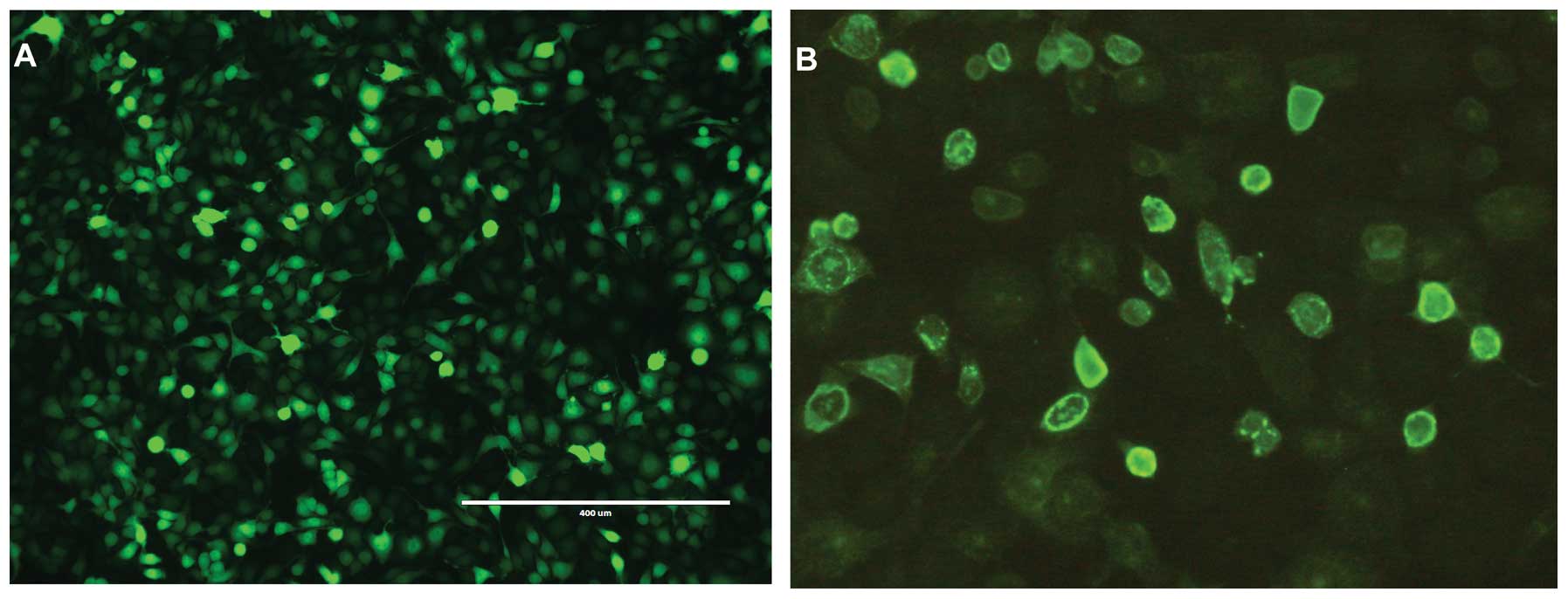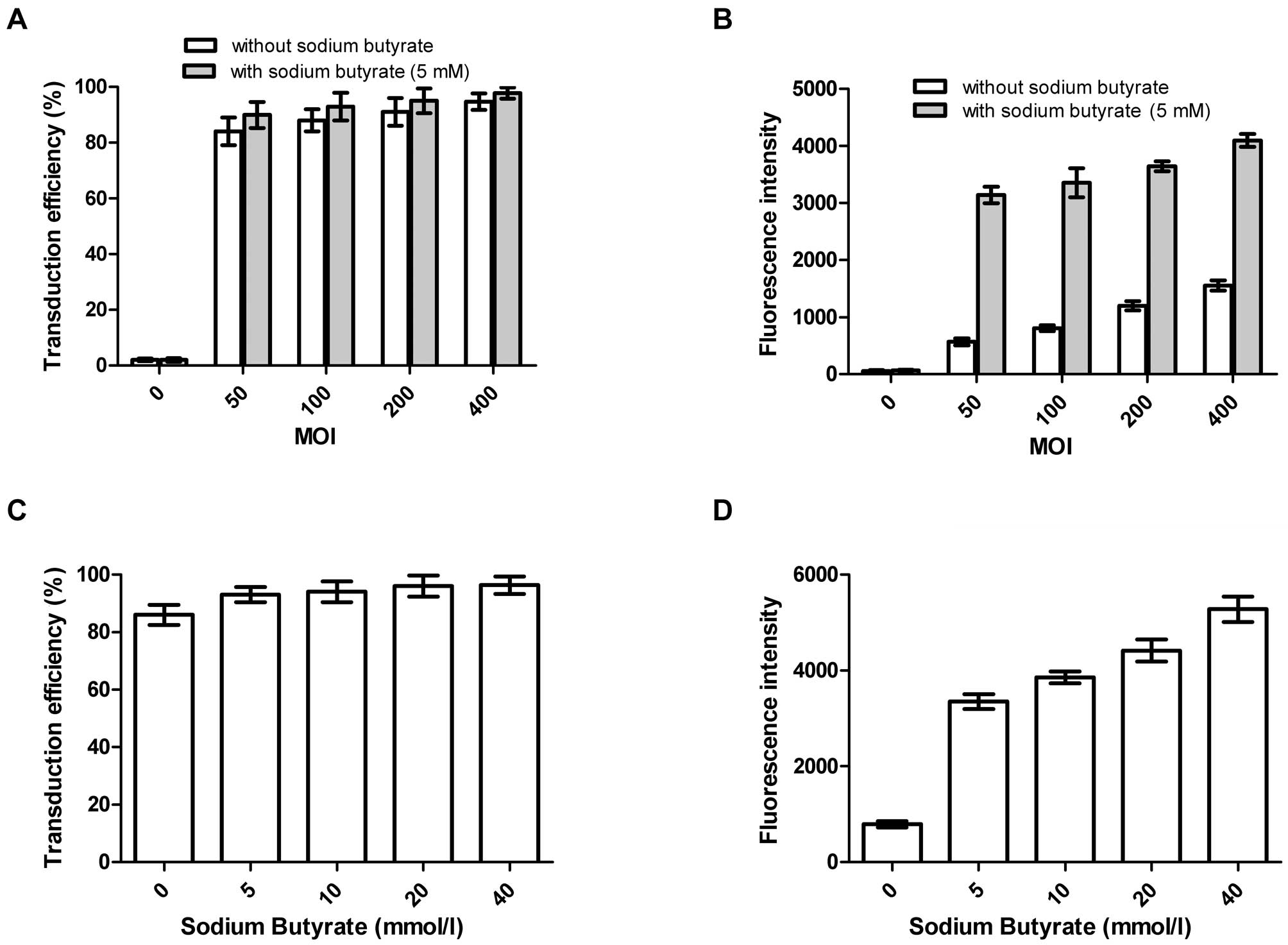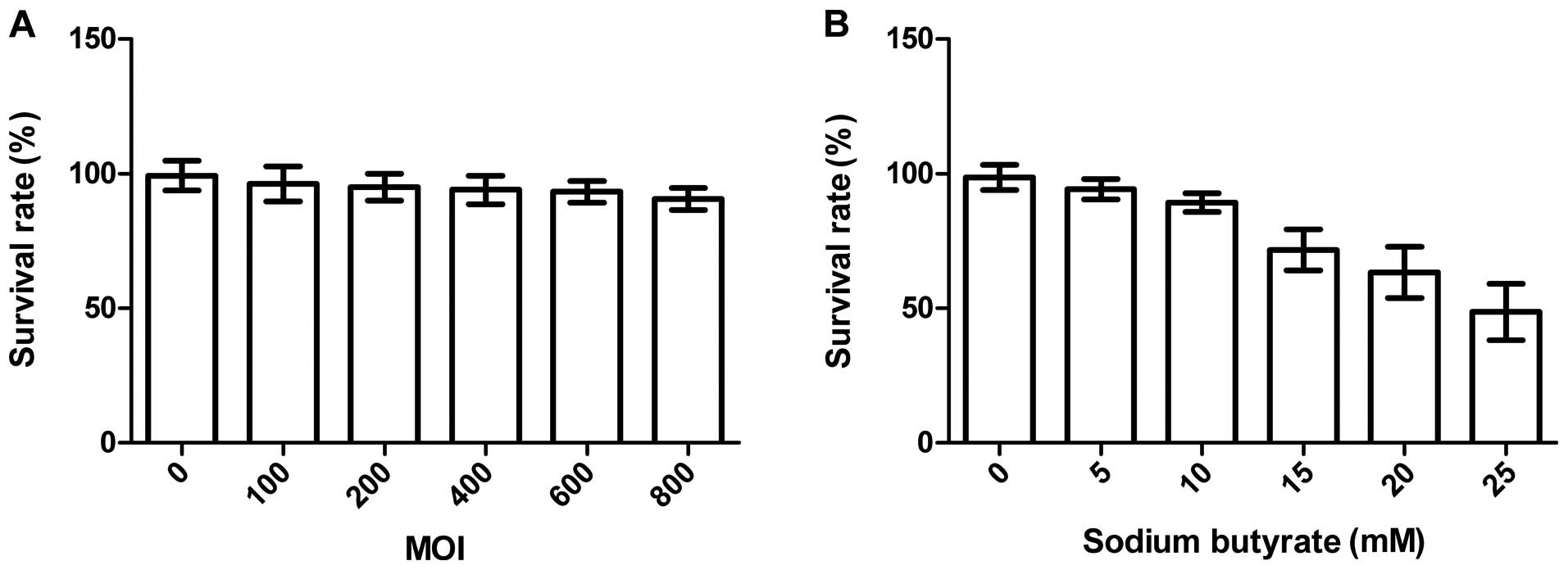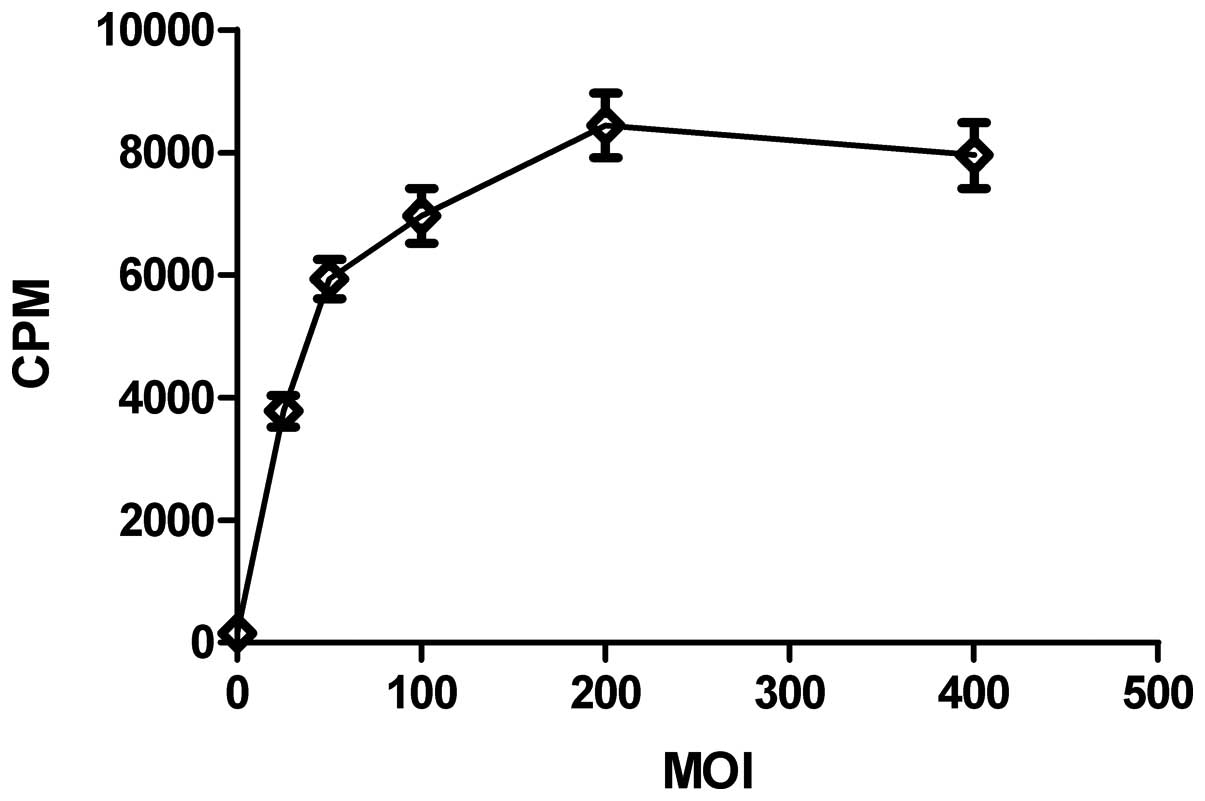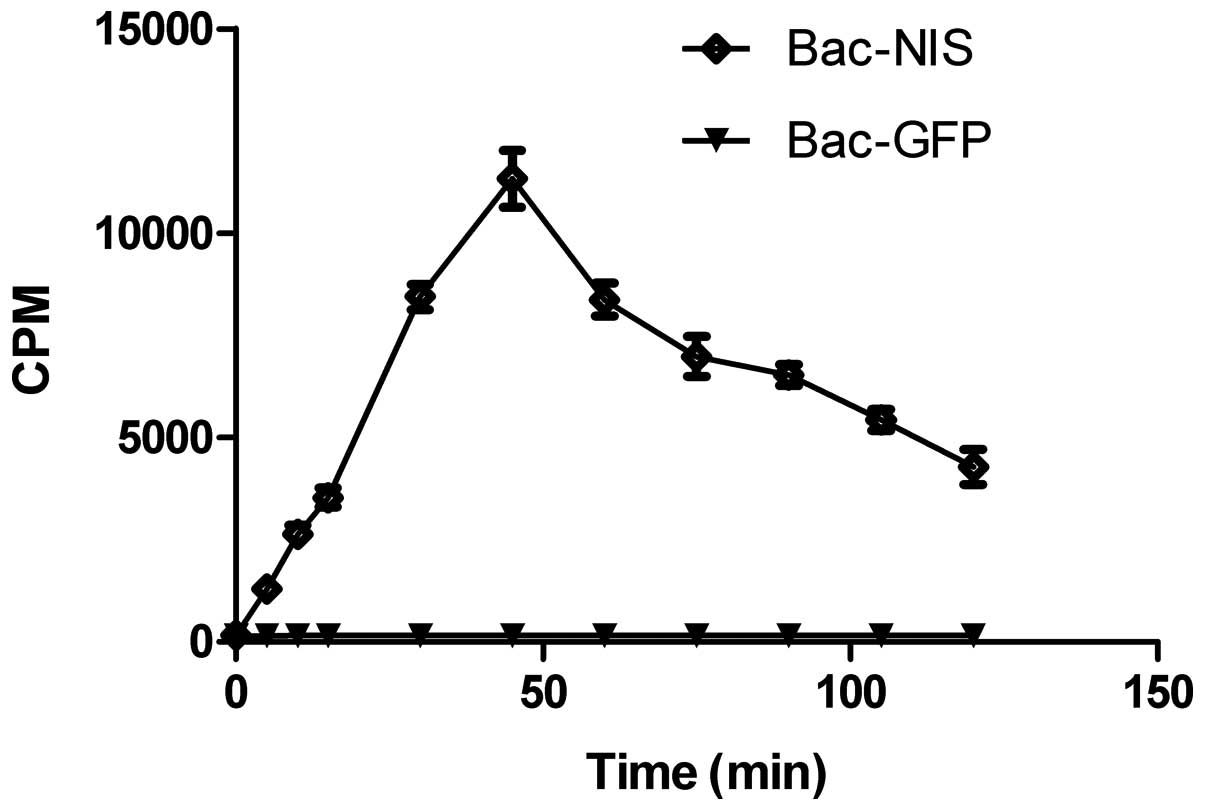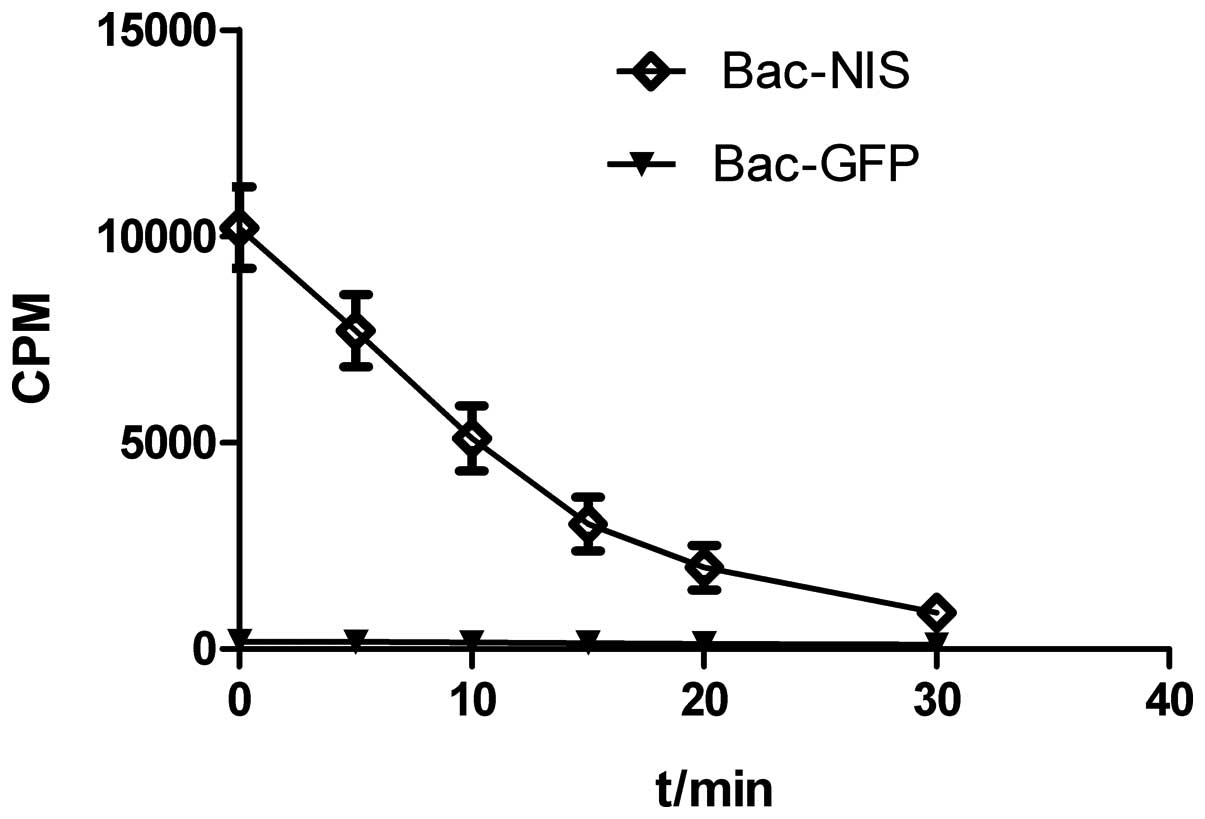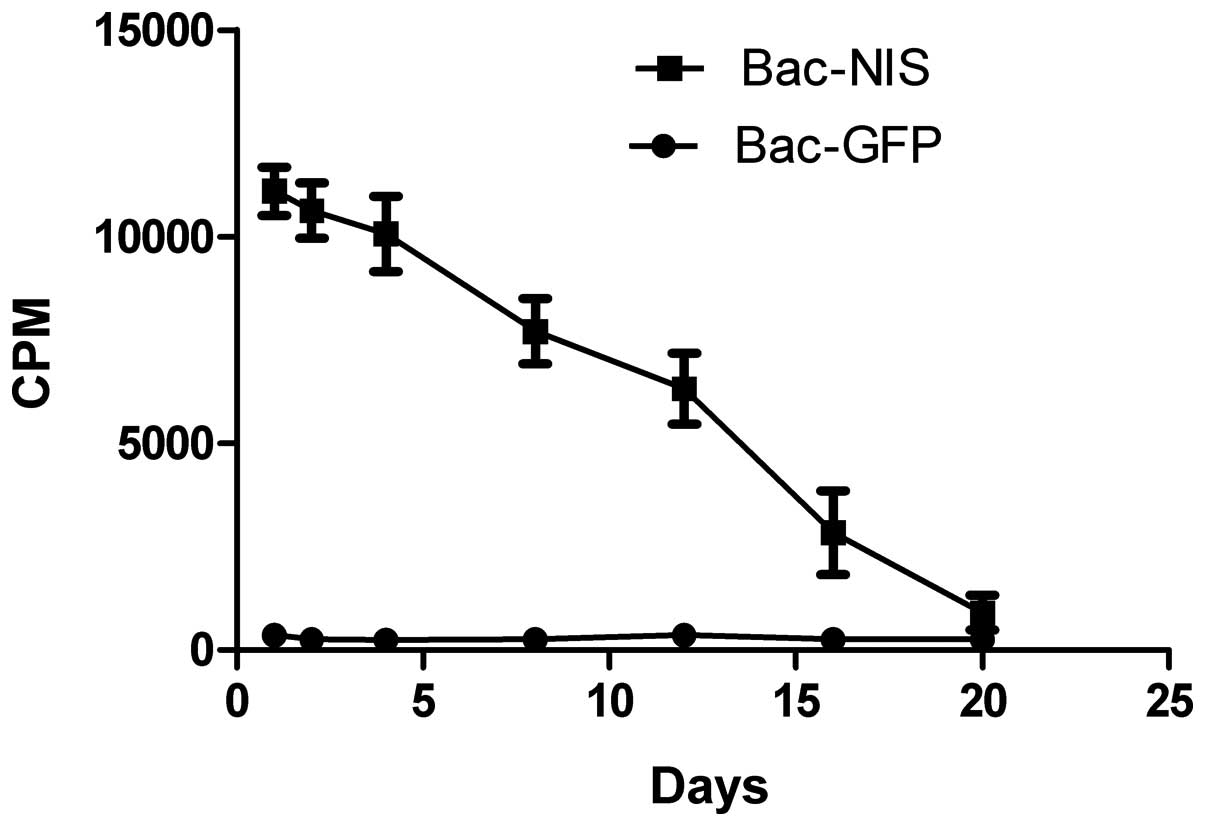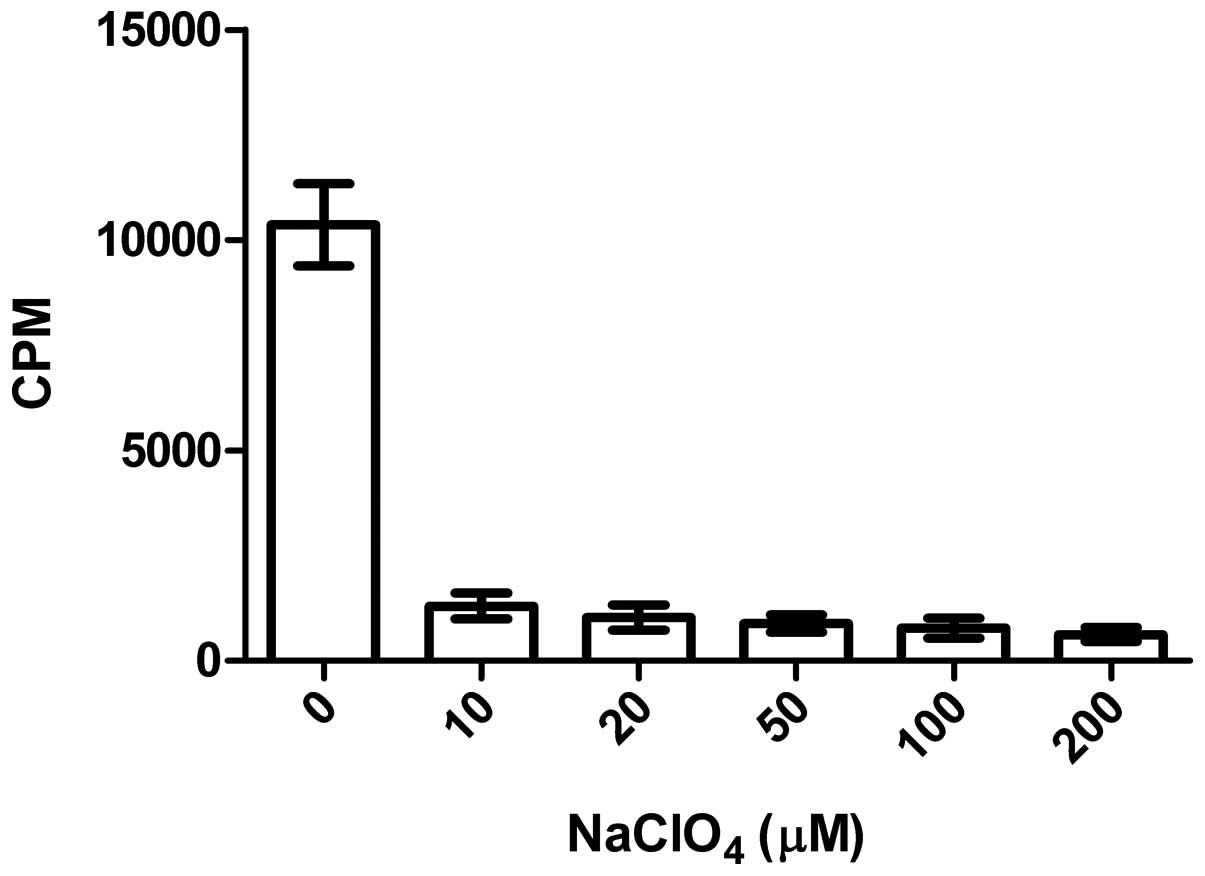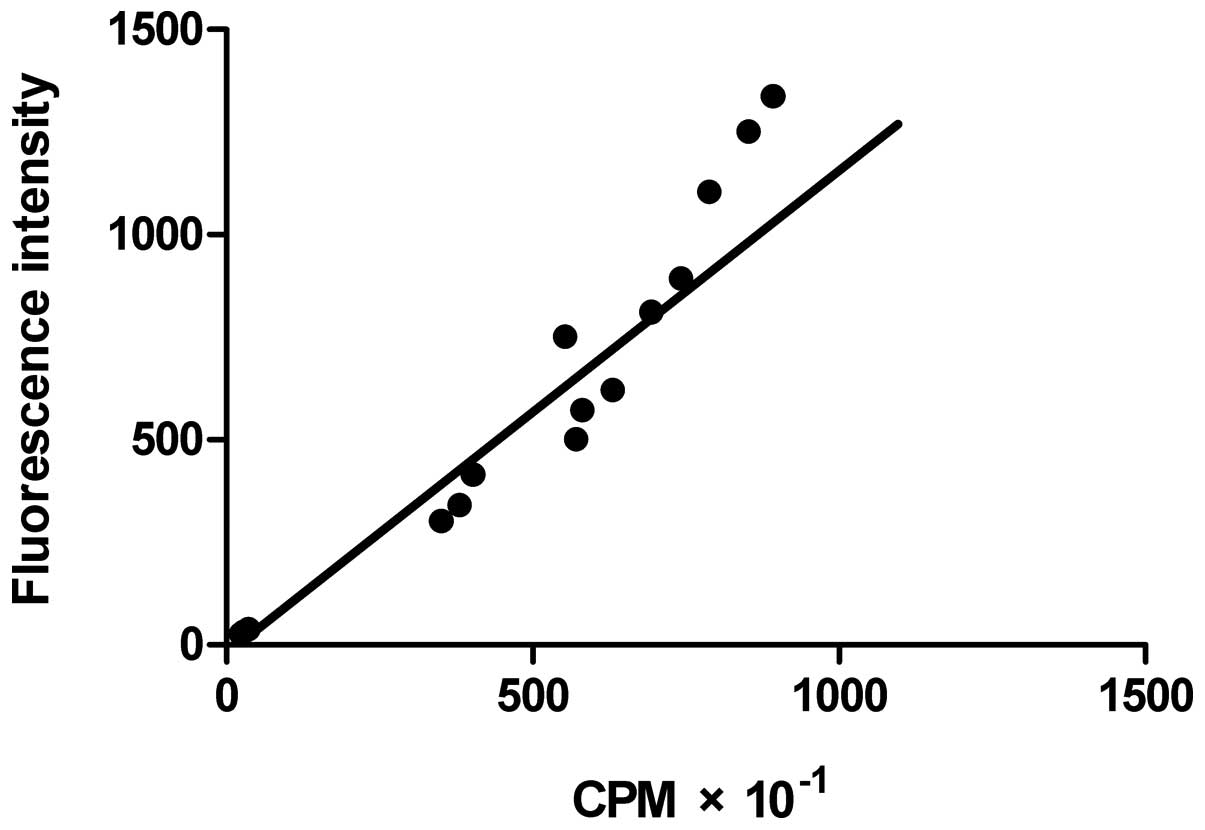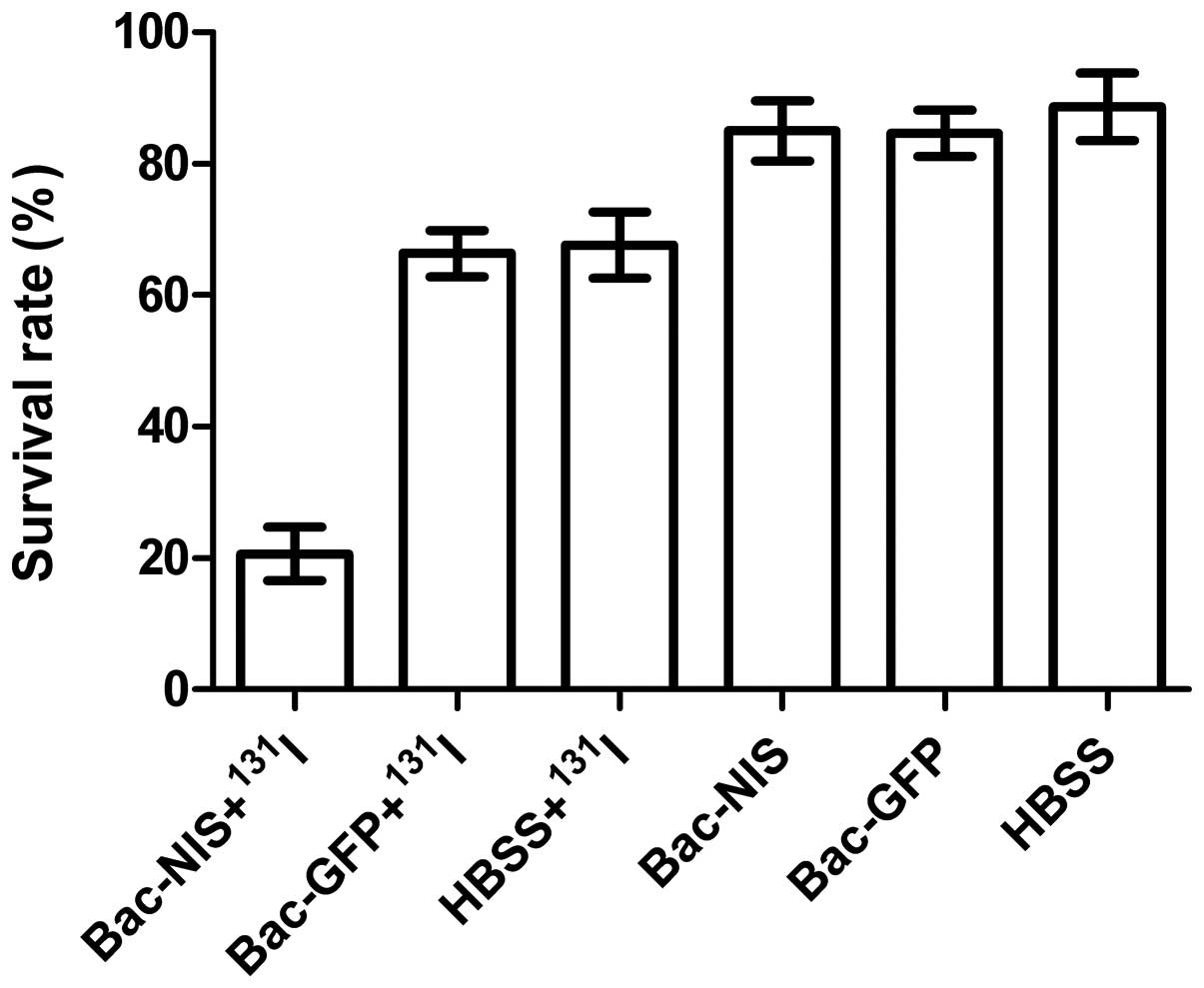|
1.
|
Dai G, Levy O and Carrasco N: Cloning and
characterization of the thyroid iodide transporter. Nature.
379:458–460. 1996. View
Article : Google Scholar : PubMed/NCBI
|
|
2.
|
Smanik P, Liu Q, Furminger T, et al:
Cloning of the human sodium iodide symporter. Biochem Biophys Res
Commun. 226:339–345. 1996. View Article : Google Scholar : PubMed/NCBI
|
|
3.
|
Pinke L, Dean D, Bergert E, Spitzweg C,
Dutton C and Morris J: Cloning of the mouse sodium iodide
symporter. Thyroid. 11:935–939. 2001. View Article : Google Scholar : PubMed/NCBI
|
|
4.
|
Dohán O, De la Vieja A, Paroder V, et al:
The sodium/iodide symporter (NIS): characterization, regulation,
and medical significance. Endocr Rev. 24:48–77. 2003.PubMed/NCBI
|
|
5.
|
Penheiter AR, Russell SJ and Carlson SK:
The sodium iodide symporter (NIS) as an imaging reporter for gene,
viral, and cell-based therapies. Curr Gene Ther. 12:33–47. 2012.
View Article : Google Scholar : PubMed/NCBI
|
|
6.
|
Carvalho DP and Ferreira AC: The
importance of sodium/iodide symporter (NIS) for thyroid cancer
management. Arq Bras Endocrinol Metabol. 51:672–682. 2007.
View Article : Google Scholar : PubMed/NCBI
|
|
7.
|
Ferlini C, Amelio RD and Scambia G:
Apoptosis induced by ionizing radiation. The biological basis of
radiosensitivity. Subcell Biochem. 36:171–186. 2002. View Article : Google Scholar : PubMed/NCBI
|
|
8.
|
Kogai T and Brent GA: The sodium iodide
symporter (NIS): Regulation and approaches to targeting for cancer
therapeutics. Pharmacol Ther. 135:355–370. 2012. View Article : Google Scholar : PubMed/NCBI
|
|
9.
|
Sun Y, Yi H, Yang Y, et al: Functional
characterization of p53 in nasopharyngeal carcinoma by stable shRNA
expression. Int J Oncol. 34:1017–1027. 2009.PubMed/NCBI
|
|
10.
|
Peng Z: Current status of gendicine in
China: recombinant human Ad-p53 agent for treatment of cancers. Hum
Gene Ther. 16:1016–1027. 2005. View Article : Google Scholar : PubMed/NCBI
|
|
11.
|
Li X, Liu X, Li C, et al: Recombinant
adeno-associated virus mediated RNA interference inhibits
metastasis of nasopharyngeal cancer cells in vivo and in
vitro by suppression of Epstein-Barr virus encoded LMP-1. Int J
Oncol. 29:595–603. 2006.PubMed/NCBI
|
|
12.
|
Airenne KJ, Mahonen AJ, Laitinen OH and
Yla-Herttuala S: Baculovirus-mediated gene transfer: an emerging
universal concept. Gene and Cell Therapy: Therapeutic Mechanisms
and Strategies. Smith Templeton N: Chapter 11.3rd edition. CRC
Press; Boca Raton, FL: pp. 263–281. 2008
|
|
13.
|
Weiss SJ, Philp NJ and Grollman EF: Iodide
transport in a continuous line of cultured cells from rat thyroid.
Endocrinology. 114:1090–1098. 1984. View Article : Google Scholar : PubMed/NCBI
|
|
14.
|
Chen CY, Lin CY, Chen GY and Hu YC:
Baculovirus as a gene delivery vector: recent understandings of
molecular alterations in transduced cells and latest applications.
Biotechnol Adv. 29:618–631. 2011. View Article : Google Scholar : PubMed/NCBI
|
|
15.
|
Wang C, Busse J and Gitterman M: A simple
afterloading applicator for intracavitary irradiation of carcinoma
of the nasopharynx. Radiology. 115:737–738. 1975. View Article : Google Scholar : PubMed/NCBI
|
|
16.
|
Dingli D, Russell SJ and Morris JC III: In
vivo imaging and tumor therapy with the sodium iodide symporter. J
Cell Biochem. 90:1079–1086. 2003. View Article : Google Scholar : PubMed/NCBI
|
|
17.
|
Blasberg RG: Molecular imaging and cancer.
Mol Cancer Ther. 2:335–343. 2003.
|
|
18.
|
Yaghoubi S, Wu L, Liang Q, et al: Direct
correlation between positron emission tomographic images of two
reporter genes delivered by two distinct adenoviral vectors. Gene
Ther. 8:1072–1080. 2001. View Article : Google Scholar
|
|
19.
|
Hingorani M, Spitzweg C, Vassaux G, et al:
The biology of the sodium iodide symporter and its potential for
targeted gene delivery. Curr Cancer Drug Targets. 10:242–267. 2010.
View Article : Google Scholar : PubMed/NCBI
|
|
20.
|
Shen D, Marsee D, Schaap J, et al: Effects
of dose, intervention time, and radionuclide on sodium iodide
symporter (NIS)-targeted radionuclide therapy. Gene Ther.
11:161–169. 2004. View Article : Google Scholar : PubMed/NCBI
|
|
21.
|
Willhauck MJ, Samani B-RS, Wolf I, et al:
The potential of 211 Astatine for NIS-mediated radionuclide therapy
in prostate cancer. Eur J Nucl Med Mol Imaging. 35:1272–1281. 2008.
View Article : Google Scholar : PubMed/NCBI
|
|
22.
|
Hofmann C, Sandig V, Jennings G, Rudolph
M, Schlag P and Strauss M: Efficient gene transfer into human
hepatocytes by baculovirus vectors. Proc Natl Acad Sci.
92:10099–10103. 1995. View Article : Google Scholar : PubMed/NCBI
|
|
23.
|
Kaikkonen MU, Ylä-Herttuala S and Airenne
KJ: How to avoid complement attack in baculovirus-mediated gene
delivery. J Invertebr Pathol. 107:S71–S79. 2011. View Article : Google Scholar : PubMed/NCBI
|
|
24.
|
Hu YC, Tsai CT, Chang YJ and Huang JH:
Enhancement and prolongation of baculovirus mediated expression in
mammalian cells: focuses on strategic infection and feeding.
Biotechnol Prog. 19:373–379. 2008.PubMed/NCBI
|
|
25.
|
Wei WI, Ho CM, Wong MP, Fung Ng W, Lau SK
and Lam KH: Pathological basis of surgery in the management of
postradiotherapy cervical metastasis in nasopharyngeal carcinoma.
Arch Otolaryngol Head Neck Surg. 118:923–930. 1992. View Article : Google Scholar : PubMed/NCBI
|
|
26.
|
Studeny M, Marini FC, Champlin RE,
Zompetta C, Fidler IJ and Andreeff M: Bone marrow-derived
mesenchymal stem cells as vehicles for interferon-β delivery into
tumors. Cancer Res. 62:3603–3608. 2002.
|
|
27.
|
Hall B, Andreeff M and Marini F: The
participation of mesenchymal stem cells in tumor stroma formation
and their application as targeted-gene delivery vehicles. Handb Exp
Pharmacol. 263–283. 2007. View Article : Google Scholar : PubMed/NCBI
|
|
28.
|
Ho YC, Chung YC, Hwang SM, Wang KC and Hu
YC: Transgene expression and differentiation of baculovirus
transduced human mesenchymal stem cells. J Gene Med. 7:860–868.
2005. View Article : Google Scholar : PubMed/NCBI
|
|
29.
|
Knoop K, Kolokythas M, Klutz K, et al:
Image-guided, tumor stroma-targeted 131I therapy of
hepatocellular cancer after systemic mesenchymal stem cell-mediated
NIS gene delivery. Mol Ther. 19:1704–1713. 2011.PubMed/NCBI
|















